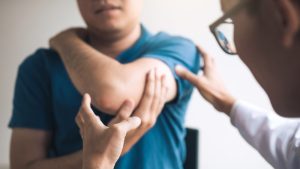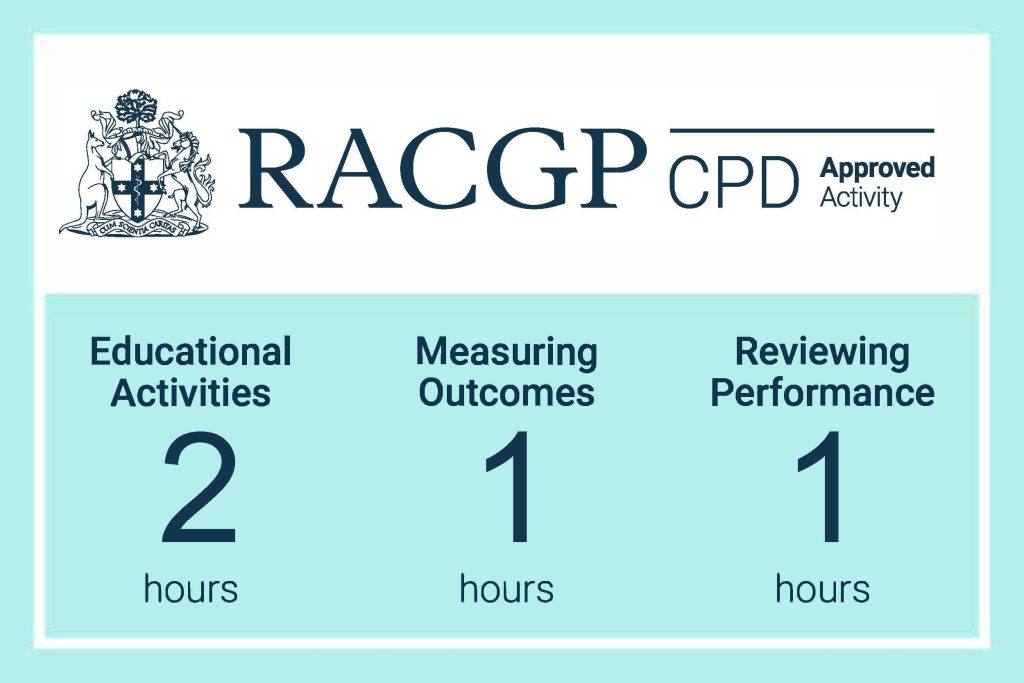Articles / Endometriosis – rethinking the role of surgery


writer
General Practitioner; Co-Director, Sydney Perinatal Doctors
0 hours
These are activities that expand general practice knowledge, skills and attitudes, related to your scope of practice.
0.5 hours
These are activities that require reflection on feedback about your work.
0 hours
These are activities that use your work data to ensure quality results.
These are activities that expand general practice knowledge, skills and attitudes, related to your scope of practice.
These are activities that require reflection on feedback about your work.
These are activities that use your work data to ensure quality results.
Endometriosis is getting a lot of airtime, with everything from awareness months to election pitches promising more pelvic pain and endometriosis clinics. But one expert believes we need a good rethink about this condition, suggesting it occurs in almost every woman—not just the purported one in seven—and that we should focus more on managing the symptoms than chasing an endometriosis diagnosis.
Professor Sonia Grover, a gynaecologist, pain medicine specialist and researcher from the Royal Children’s Hospital Melbourne and the Murdoch Children’s Research Institute, believes almost all women get endometriosis because almost all women retrograde bleed.
The timing of surgery determines if and where lesions will be seen, she says. “There’s been beautiful studies where they’ve looked, and when they come back next time, the spot that was on the right-hand side is gone. And you’ve now got one on the left-hand side, or the one that’s on the left is now on the right, or you’ve got none.”
“We know endo can go away by itself,” she adds.
Up to 45% of women with no pain have endometriosis lesions—and that’s likely an underestimate since women without pain are less likely to undergo laparoscopy.
“We need to remember that pain and endometriosis do not have a clear association, despite everything that’s being written,” Professor Grover says.
No symptom predicts whether endometriosis is found on laparoscopy, she notes.
In fact, choice of gynaecologist is a better predictor of whether a woman will undergo laparoscopy than pain, past history of endometriosis or quality of life, she says, citing a study she led at Melbourne’s Mercy Hospital for Women.
Almost 500 adult women referred to a gynaecology clinic with pain were randomised to either a unit where the clinicians had additional advanced endoscopic skills, or Professor Grover’s unit, where the clinicians had additional hormonal and pain management skills.
“We had their past medical history, their parity, previous endo diagnosis, their pain scores for all the different sorts of pain you could have,” she explains.
“The best predictor of whether you had surgery is which unit you attended: 72 out of 102 women who had surgery came from the endoscopic team versus 30 from my team. So period pain, past history of endo, shocking pain, more impact on quality of life—they were lesser predictors.”
Of those who had a laparoscopy, half had endometriosis, regardless of which unit they attended. In fact, none of the factors assessed in the study predicted endometriosis diagnosis at surgery.
Nor was pain found to be a likely predictor of endometriosis severity.
“So it doesn’t matter what criteria you use for selecting your patients, there is no symptom that predicted finding endo,” Professor Grover says.
Furthermore women who have a negative scope often struggle “because they then don’t feel validated for their pain,” she adds, citing a qualitative study at Melbourne’s Royal Women’s Hospital, which found participants reported worse mental health following their negative scope.
Periods themselves, especially heavy ones, are often the real issue, Professor Grover says.
Like labour, periods are a normal physiological process that often involves a degree of pain, she explains. “You’re hacking at the inside of your uterus. How do you do it? You release a whole set of fancy chemicals that tell the lining to drop dead, crumble up, tear off, and then your uterus squeezes.”
“The kill, crumble, peel, squeeze job is caused by a whole lot of inflammatory substances, many of which are pain stimulators, but they can also cause the nausea, vomiting, diarrhoea, aches, pains, dizziness, faintness, anaphylaxis—whatever else you get with period time.” These substances are also known to be nociceptor stimulators, she notes.
No wonder it hurts.
This doesn’t mean women have to put up with period pain, she stresses.
While laparoscopic surgery is often recommended, it is costly—and waiting for surgery may waste time that could be better used managing the symptoms, Professor Grover says.
Importantly, surgery may not result in better pain relief.
This year the Australian and New Zealand College of Anaesthetists Faculty of Pain Medicine released a statement emphasising that a whole-person, biopsychosocial approach “should be prioritised above a narrowly-targeted end-organ focused approach to pelvic pain care.”
“Surgical treatment of lesions has not been shown to reliably improve pain and disability outcomes. Some evidence suggests that ill-advised surgery may in fact worsen outcomes for some women,” it said.
Professor Grover underscores these points.
“There is good evidence that over 30% of people experience more or new pain at 12 months post their laparoscopy for pain. Furthermore, there is good evidence that using the Mirena IUD or continuous OCP, rather than cyclic hormonal approaches, are very effective at preventing return of pain,” she explains.
This suggests that bleeding and release of inflammatory substances from the uterus may play a key role in driving pain, she adds.
“Let’s focus on the symptoms and not the lesions,” Professor Grover says.
Pain can arise from the abdominal wall muscles, pelvic floor, bladder, bowel and ovulation, she adds, so it’s important to consider these in the diagnostic workup.
If heavy, painful periods are the problem, tranexamic acid, NSAIDs, the Mirena and oral hormonal medications can all help, she says, stressing that you can experiment with pills to achieve symptom relief without unacceptable side effects.
“It’s like walking down the chemist aisle choosing a shampoo… If one pill doesn’t suit, try a different one,” Professor Grover says.
Effective early intervention can help prevent long-term problems, she says, noting common drivers of persistent pain include:
Trauma – “There is good evidence that people who’ve had more traumas in their life are more likely to have more pain.”
Central sensitisation – “which means you get more gut symptoms, more headaches, more back pain, and everything hurts more than it did before,” she says.
It’s important to tackle the full spectrum of symptoms and anything that may be driving them, she adds. “What can we do to help you sleep? What are we doing about your mental health? What are we doing about your period pain? Have we switched your hormones and uterus off adequately? What are we doing about your bladder? Do you need to see a pelvic floor physio?”
Professor Grover says back pain research shows patients have better outcomes when health professionals normalise expected imaging results (“looks normal for your age”) rather than highlighting the abnormalities and details—and she argues the same principle applies to gynaecologists talking about lesions with endometriosis.
“We’re increasing angst,” she says, adding that we pathologise women by using language that describes endometriosis as ‘lifelong’ or ‘incurable’, or pointing to worst case outcomes such as infertility or the need for a hysterectomy. Instead, she recommends validating the pain, but also reassuring women that it’s fixable and doesn’t mean anything is wrong with them. This empowers women with knowledge, and the means to tackle and manage their symptoms, she says.
Another perspective – Endometriosis Australia’s medical director weighs in
In the past, surgery for endometriosis was over-emphasised, agrees Associate Professor Anusch Yazdani, a subspecialist in reproductive endocrinology and infertility, reproductive endosurgeon and medical director for Endometriosis Australia. However, this was because we had a limited understanding of complex pain, so we thought surgery was necessary to “make it better,” he says.
Times are changing he adds, and “the days of women having 3, 4, 5, 6, 10, 15 surgeries have hopefully well and truly disappeared because people now understand the mechanisms of persistent pain and the complexity of the issue rather than just being focused on the lesions.”
Surgery still has a key role
In the swing away from surgical management, we need to be careful not to go too far, he cautions.
Otherwise, women could lose access to “an appropriate management option that has level one evidence from prospective randomised controlled trials that very clearly demonstrate the benefits of surgery in certain groups.”
Specifically, he says surgery has been shown to have a significant impact on women with pelvic factor infertility – not on ovulatory infertility.
He and his colleagues also argue that lesions that regress or remain stable disproportionately involve superficial/mild disease, whereas deeply invasive disease is distinct, with 24 RCTs providing “considerable evidence of improvement in pain symptoms and quality of life” when surgery is used in these women.
“Surgery gives us capacity to make the diagnosis, to alter the course of the disease, to improve fertility. None of the other interventions we have can actually do that at this point, so it still remains a central component,” Associate Professor Yazdani says.
“In the end, endometriosis is a disease of pathology that does result in long-term chronic sequelae like pelvic pain and infertility and not all of those can be dealt with by removing endometriosis. But if you’ve got a huge lump sitting in your pelvis that’s obstructing your bowel or bladder or a large nodule sitting behind the uterus that means you can’t have sex because you have so much pain—that’s not going to get better no matter how much we explore the consequences of having persistent pain.”
“There is no such thing as just one treatment for this and we can’t be just medical, but we can’t also be just surgical.”
Shifting the narrative
Recent years have seen the rise of a narrative encouraging women to embrace their periods—pain and all—particularly among a younger demographic, Professor Yazdani says. “But if you see the women whose lives are completely destroyed by endometriosis, I don’t think that’s appropriate.” Nor should we be making “empowered victims” by over-emphasising the role of trauma, he says.
Regarding language, he says Endometriosis Australia actively discourages fearmongering.
“We’re very clear that we’re saying not everybody with endometriosis will have persistent pain; not everybody with endometriosis will have infertility; not everybody with endometriosis will wind up with disability.”
“We’re giving women knowledge and a voice to be able to make choices because there is no one way of treating this disease.”
For more detail on Professor Sonia Grover’s perspective, including references, see this article published last year in the Australian and New Zealand Journal of Obstetrics and Gynaecology and this piece in the Conversation earlier this year.
You can also find the ANZCA Faculty of Pain Medicine statement here.
For more on Associate Professor Anusch Yazdani’s perspective, see this response to Professor Grover and her colleagues, also published in ANZJOG.
Based on this educational activity, complete these learning modules to gain additional CPD.

STIs – Common and Tricky Cases

Role of Testosterone During Menopause – Evidence vs Hype

RSV Prevention in Infants and Pregnant Women

Vision and Driving Fitness: Key Insights for Health Practitioners

writer
General Practitioner; Co-Director, Sydney Perinatal Doctors



Yes
No
Listen to expert interviews.
Click to open in a new tab
Browse the latest articles from Healthed.
Once you confirm you’ve read this article you can complete a Patient Case Review to earn 0.5 hours CPD in the Reviewing Performance (RP) category.
Select ‘Confirm & learn‘ when you have read this article in its entirety and you will be taken to begin your Patient Case Review.
Menopause and MHT
Multiple sclerosis vs antibody disease
Using SGLT2 to reduce cardiovascular death in T2D
Peripheral arterial disease
